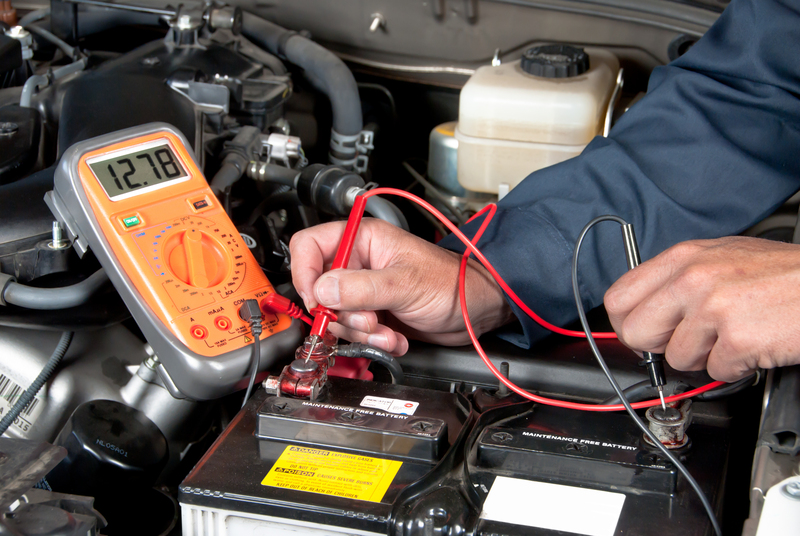Preserving Freezer Functionality During Periods of Rest
Posted on 24/06/2025
In both residential and commercial settings, ensuring the ongoing functionality of freezers during periods of rest is essential for food safety, appliance longevity, and energy efficiency. Whether you're planning a vacation, managing seasonal business downtimes, or simply reducing usage, preserving freezer functionality during periods of rest safeguards your stored goods while protecting your investment. In this comprehensive guide, we'll explore best practices, expert tips, and innovative solutions to maintain peak performance from your freezer--even when it's not in active use.
Understanding Freezer Downtime and Its Risks
Freezers are designed to operate continuously; however, situations may arise where usage decreases significantly or the appliance stands idle for extended periods. These scenarios, known as freezer downtime or periods of rest, introduce certain risks, including:
- Frost buildup due to fluctuating temperatures or humidity
- Degradation of stored foods' quality
- Unpleasant odors from remaining residues
- Component wear and tear when restarts occur
- Risk of mold and bacterial growth
Understanding these risks is the first step toward implementing effective strategies for preserving freezer functionality during periods of minimal use.

Preparation: Steps to Take Before Entering a Period of Rest
1. Inventory and Organization
- Evaluate what's inside: Remove expired or unnecessary items.
- Group similar items together to streamline usage when the freezer is in regular operation again.
- Label and date all remaining items to guarantee easy tracking.
2. Thorough Cleaning
Before a freezer enters a downtime period, deep cleaning is crucial. Defrost the unit, wipe all surfaces with a mild disinfectant, and ensure all food spills and residues are removed. This step:
- Prevents mold and mildew
- Reduces lingering odors
- Protects freezer components from unnecessary strain
3. Adjusting Temperature Settings
Set the freezer to the manufacturer's recommended resting temperature if you choose to keep it running, usually between -18?C and -15?C (0?F to 5?F). This minimizes energy consumption while maintaining safe conditions for any remaining stored items.
4. Ensuring Air Circulation
Good air flow is essential for preserving freezer performance during rest periods. If the freezer is empty, consider leaving the door ajar using a spacer to prevent stale air and mold buildup.
5. Moisture Control Measures
Placing an open box of baking soda or a moisture absorber in the freezer will help control humidity and odors.
Best Practices for Maintaining a Freezer in Prolonged Rest
Keep It Plugged In (With Minimal Use)
If regulations or food safety concerns require continuous operation, allow the freezer to run but at an adjusted, energy-efficient temperature. Periodically check for fluctuations or alarms, and discard or rotate food items when necessary.
Shut Down and Defrost Completely (When Empty)
If you intend to leave the freezer unused and empty:
- Switch off, unplug, and prop the door open.
- Ensure all ice and frost are removed to prevent water leakage and component damage.
- Clean thoroughly and dry all internal surfaces.
- Place a box of baking soda inside to absorb residual moisture and odors.
Energy Efficiency During Downtime
Preserving freezer functionality during periods of rest is not only about maintenance, but also about reducing energy consumption. Modern freezers often include eco or vacation modes designed for minimal usage periods--enabling these features can significantly minimize utility costs.
Common Questions About Freezer Rest Mode
Is It Better to Keep a Freezer Running When Not in Use?
Sometimes, yes. If the freezer still contains perishable goods, running it at a slightly higher but safe temperature preserves those items and the appliance itself. However, if the freezer is completely empty and expected to remain unused for weeks or months, turning it off and propping the door open is preferred to prevent odor, mildew, and unnecessary energy use.
How Can Mold and Odors Be Prevented?
- Thoroughly dry the interior before closing up the freezer for rest.
- Use baking soda or activated charcoal as natural odor absorbers.
- Regularly check and ventilate the freezer space if possible.
Does Leaving a Freezer Door Slightly Open Help?
Yes. When the freezer is powered off, leaving the door ajar allows air to circulate, preventing trapped moisture from fostering mold or unpleasant smells.
Expert Tips for Long-Term Freezer Preservation
- Use a surge protector: Sudden power fluctuations, especially if restarting after a rest period, can damage internal electronics. Surge protection is invaluable.
- Schedule periodic inspections: Even during inactivity, check for leaks, pests, or electrical issues.
- Lubricate door seals: Prevent drying and cracking by gently applying food-grade silicone to gaskets and seals.
- Monitor humidity levels: If the freezer is in a humid location (like a basement), use desiccant packs or a dehumidifier.
- Protect against pests: Ensure the area around the freezer is clean and sealed to prevent rodents or insects from nesting.
Reactivating a Freezer After Periods of Rest
1. Inspect for Dust, Pests, and Residues
Before plugging in your freezer after downtime, inspect both the interior and exterior for any dust buildups, insect or rodent evidence, or remaining food residue.
2. Clean and Sanitize
Wipe down all surfaces with a mixture of vinegar and water or a food-safe sanitizer. Allow it to dry completely before adding food.
3. Test Functionality
Plug the freezer in and set it to the desired temperature. Allow several hours to reach equilibrium. Place a thermometer inside and confirm it maintains the appropriate cold range for at least 24 hours before refilling.
4. Restock
Gradually reintroduce frozen foods, prioritizing items that freeze quickly or require consistent temperatures for safety.
Seasonal & Business Applications for Freezer Maintenance
For Seasonal Businesses
Many businesses see varying levels of activity throughout the year, leaving commercial-grade freezers idle for extended periods. Preserving freezer functionality during periods of business rest involves:
- Following all cleaning and unplugging protocols
- Documenting all maintenance activities for warranty protection
- Planning for routine off-season check-ins
For Homeowners on Vacation
Vacations or travel plans may mean long periods of freezer inactivity. Homeowners should:
- Plan meals in advance to minimize stored perishables
- Adjust freezer settings for optimal efficiency
- Request a neighbor or friend to check the freezer if possible, especially during summer or storm seasons
When Moving or Renovating
If you must power off your freezer for a move or home renovation, ensure it's completely defrosted, sanitized, and dry before relocation. Moisture trapped inside an unplugged freezer can corrode components and create stubborn odors, undermining future usability.

Smart Technology for Modern Freezer Management
Advancements in smart appliances now allow easier monitoring and preservation of freezers even during long rest periods:
- Remote monitoring sensors: Alert homeowners or business owners of temperature deviations, door openings, or power interruptions.
- App-integrated controls: Adjust temperature and modes from anywhere using smartphones or tablets.
- Energy usage reports: Assess energy consumption during periods of rest to identify potential efficiency improvements.
Leveraging smart technology not only extends the life of your freezer but also provides peace of mind during prolonged absences or low usage cycles.
Conclusion: Long-Term Benefits of Preserving Freezer Functionality in Rest Mode
Investing time and care in preserving freezer performance during downtime yields ongoing dividends. By implementing practical maintenance routines, utilizing moisture and odor control methods, and embracing modern technology, you extend your freezer's lifespan while protecting stored items and reducing costs. Whether you're a homeowner heading on vacation, a business owner closing for the season, or simply optimizing appliance usage, these strategies offer the assurance that your freezer will be in peak condition whenever needed again.
Key Takeaways for Maintaining a Freezer During Periods of Rest
- Always clean and dry the unit thoroughly before extended shutdowns.
- Keep doors open or slightly ajar for air circulation when the appliance is off.
- Use odor absorbers to maintain a fresh-smelling environment.
- Regularly inspect and attend to the appliance, even during rest periods.
- Utilize smart monitoring tools for timely alerts and adjustments.
With these expert recommendations, you can confidently preserve your freezer's functionality during periods of rest, ensuring safety, efficiency, and convenience, both now and for years to come!



